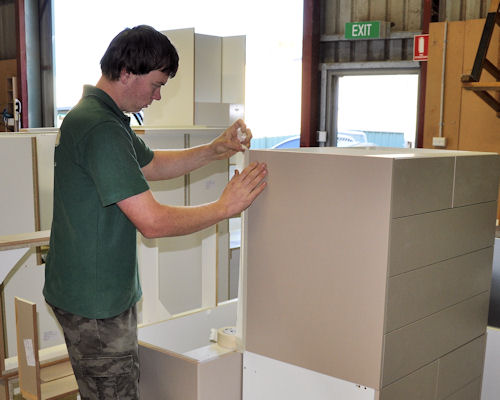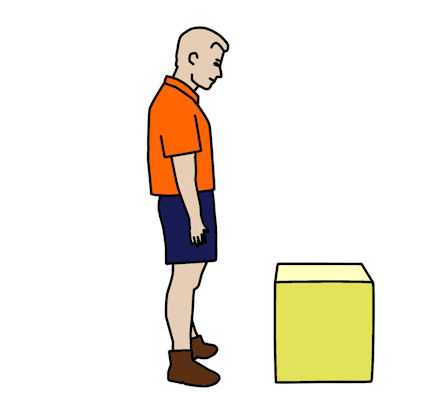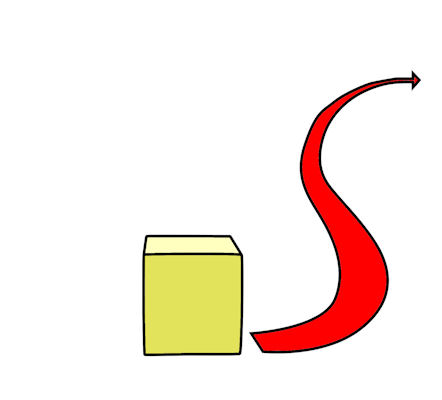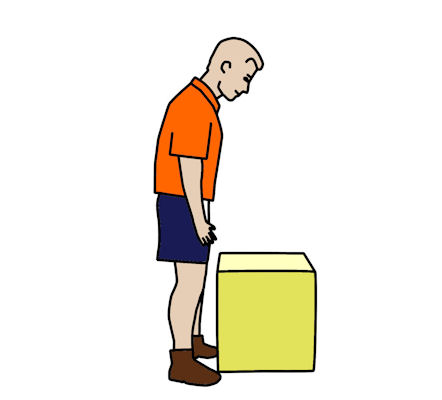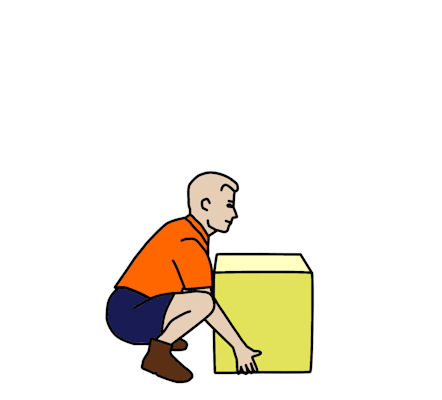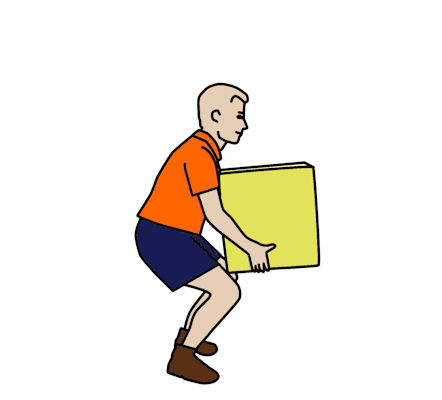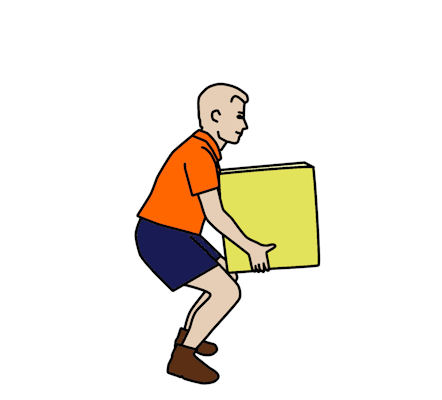Transporting cabinets
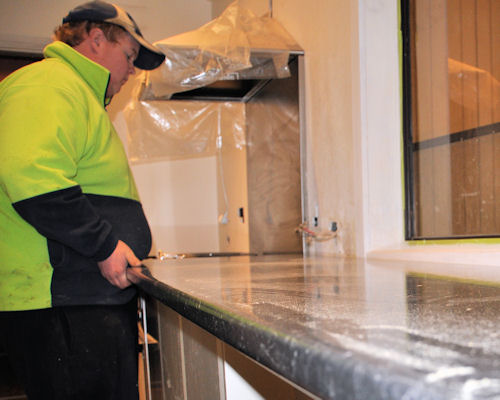 Audio for slide 2 (mp3 |6|KB)
Audio for slide 2 (mp3 |6|KB)
Some materials are more fragile than others, and so need to be treated with more care when they're being transported in the truck.
But whatever the products are, the client will expect everything in the finished project to look brand new and spotless, regardless of any issues you might have had to deal with along the way.

But whatever the products are, the client will expect everything in the finished project to look brand new and spotless, regardless of any issues you might have had to deal with along the way.

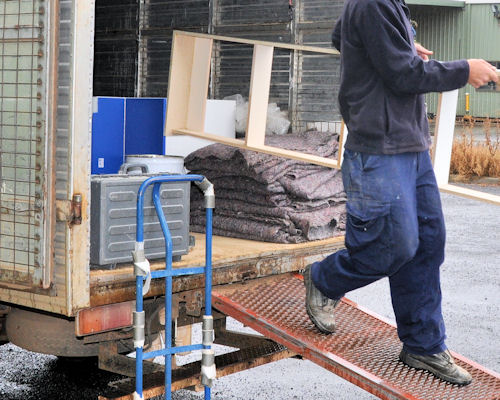 Audio for slide 3 (mp3 |6|KB)
Audio for slide 3 (mp3 |6|KB)
Here's some hints on avoiding bumps and scuffs to the units while they are being moved from the workshop to the site:
- Don't drag or push large units - get help if you can't lift an item on your own, or if you have trouble holding it steady on a trolley.
- Remove adjustable shelves and wrap them up in a protective covering, such as a blanket, cardboard or bubble wrap. Do the same with kickboards.
- Put cushioning between items that might rub against each other or against the side of the truck.
- Keep protective coverings clean and free from dirt or grit, to avoid the problem of embedded particles scratching the finished surfaces of units.
- Try to fill up empty spaces in the truck when you're packing items in place.
- Secure all cabinets in the truck with straps so they can't move around while in transit. If you use ropes, be sure to protect the corners of cabinets with cardboard, wood or metal corners to stop the ropes from 'biting' into the edges.
- Check the straps during the trip to make sure they haven't loosened up.

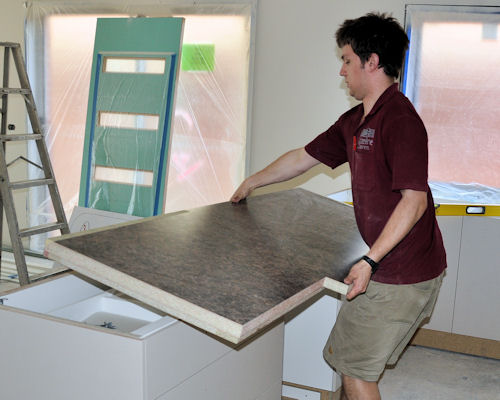 Audio for slide 4 (mp3 |6|KB)
Audio for slide 4 (mp3 |6|KB)
Good manual handling practices
'Manual handling' means physically moving things around by hand. There's lots of manual handling involved in taking cabinets to the jobsite and putting them into position, ready for fixing. One of the most vulnerable parts of your body to a manual handling injury is your back. Fortunately, these injuries can easily be avoided simply by using good practices.

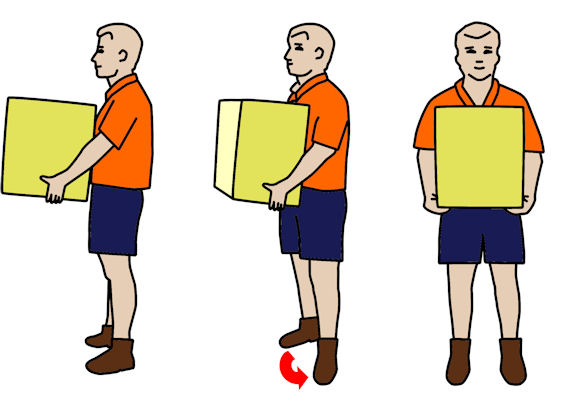 Audio for slide 12 (mp3 |6|KB)
Audio for slide 12 (mp3 |6|KB)
Also remember that while your joints and muscles are under strain, you should avoid twisting your back.
If you need to change direction while you're picking up, carrying or putting down a load, swivel on your feet so that your whole body moves in the same direction.
For more details on good manual handling practices and ways to avoid back strain, go to the unit Working safely.

If you need to change direction while you're picking up, carrying or putting down a load, swivel on your feet so that your whole body moves in the same direction.
For more details on good manual handling practices and ways to avoid back strain, go to the unit Working safely.

 Go to Arriving at the site
Go to Arriving at the site